In a day when all the fly fishing rage seems to be centered on salty critters that induce screaming reels and stylish expletive “bleeps” in one of the hundreds of new-era videos sucking up bandwidth these days, the essence of the craft seems to have gone south. Literally and figuratively.
Oh, I’m part of the problem. Believe me. I dig the flats and the fish that swim them. But it’s spring up here where we can actually tell a difference between the seasons, and my thoughts are shifting from bones and permit to chasing lighter fare in places where, when summer finally does arrive, it’s damn near over.

Places like the Alaskan interior, where the sun is shining now and pushing snowmelt into the region’s many rivers. And in those rivers, under brown, rushing waters lined by birch and alder, one of the most game of fly fishing targets is busy pair up, ensuring anglers yet another generation of wonderment.
Arctic grayling might be the perfect dry fly target, and while our nation’s creative fisheries managers have done their level best to bring grayling to the masses in the Lower 48, the most reliable American destination to catch this gorgeous cousin of the trout remains Alaska. And perhaps no other river in the Last Frontier is more identified with grayling than the Chena.
Not the Chena as it flows slow and deep through Fairbanks, but the Chena as it meanders through the Chena River State Recreation Area east of town. The river never wanders too from the Chena Hot Springs Road, making it wonderfully accessible to anglers in a state where the best fishing is often the hardest to get to.
To the casual eye, the Chena along this stretch looks like a classic Western freestoner—it’s pocked by riffles and runs, and downed birches and black spruces add character and depth to the stream. It looks … fishy.
More Like This
And the river’s residents—those feminine yet bold grayling—are almost always in the mood to slash at a dry fly. And maybe that’s what makes grayling so attractive to the typical Western fly fisher. They behave a lot like our beloved rainbows and cutthroats (in fact, in the Missouri River drainage of Montana, grayling are native and evolved alongside west slope cutthroats—but their numbers are, sadly, diminished), and the waters they inhabit feel … familiar.
But, from the sail-like dorsal to the shimmering silver scales, the grayling is as worthy a target as any of its salmonid brethren—perhaps more so. Here in the Lower 48, a truly large specimen is a rarity, but the in Chena, a 20-incher is common, and on light tackle, the fish’s life force is admirable. That it’s not the most discerning of top-feeders shouldn’t dissuade the particular angler from chasing it, for the waters it occupies must be among the coldest and cleanest on the planet for it to thrive.
And that simply means that, when chasing grayling in waters like the Chena, one need only look around to truly appreciate the wild heart of the fish that swims there. The vast birch and spruce forests of the Alaskan interior shelter moose the size of rhinos and critters much more imposing, like grizzlies and black bears and packs of wolves that roam the woods, sliding in and out of the trees like ghosts, always on the heels of prey. And it all happens under the shadow of Denali, that is visible from nearly any reasonable stretch of high ground, hundreds of miles to the southwest.
Where, on clear and brief summer nights, the northern lights flash brilliantly along the horizon. Where bush planes dot the daylight skies. Where waters slice unimpeded and untarnished through a truly wild landscape that, today, is much like it was before Alaska became the source of dreams for Russian fur traders and European miners… and wandering, wide-eyed fly fishers.
Perhaps that’s the beauty of grayling. The fish represents a reminder of Alaska … of what once was, even in the relatively pristine rivers of Montana where the fish remains native, yet perilously close to extinction. Or in Michigan, where it is, indeed, a lost cause.
It’s doubtful, on a good day, that most fly fishers will find the grayling a terribly challenging target—in seldom-fished waters, they might be the anglers best friend. A high-floating Adams or a gaudy Royal Coachman will no doubt bring these opportunistic feeders to the surface, and they’ll even hit streamers seemingly too large to fit past their smallish mouths. Nymphs, too, can be particularly deadly. In short, they’re hardly choosy, often mindless and usually the easiest fish in the stream to catch (perhaps that explains their relative rarity in their Lower 48 native waters?)
But that’s not the point. I like to think grayling are proof that, left to its own devices, the land and its waters can provide all that’s needed for its creatures to thrive. That, perhaps with effort, some of the places these fish once swam could once again teem with grayling.
For now, though, it’s the waters like the Chena that give refuge for this worthy fish. May these waters always flow clear and clean … for the grayling and for the anglers who cherish them.




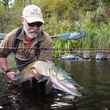


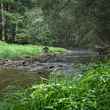









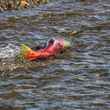








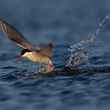
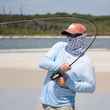

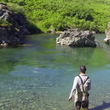
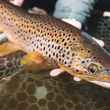
Comments
HermanY replied on Permalink
Thanks for this. Strangely, the two species that are calling me the most to fish Alaska/Yukon/NWT are Northern Pike and Grayling.
Chad Shmukler replied on Permalink
I don't think that makes you strange at all, Herman.
Alaska's massive pike call to many an angler, and grayling aren't exactly widely available elsewhere. You're right that it might not be typical for those to be your greatest calling from those regions, but I'd venture to say it makes a good bit of sense.
Dennis replied on Permalink
After reading this article, you've gotta watch this video about fishing for grayling in the Chena http://vimeo.com/94711113
Pages